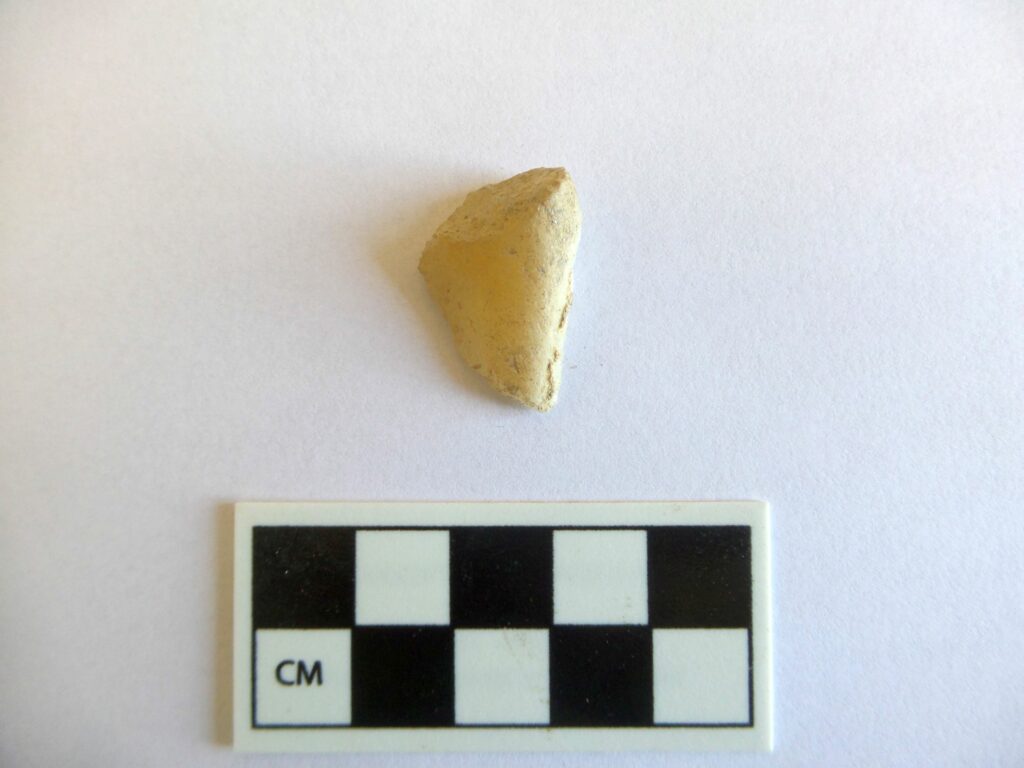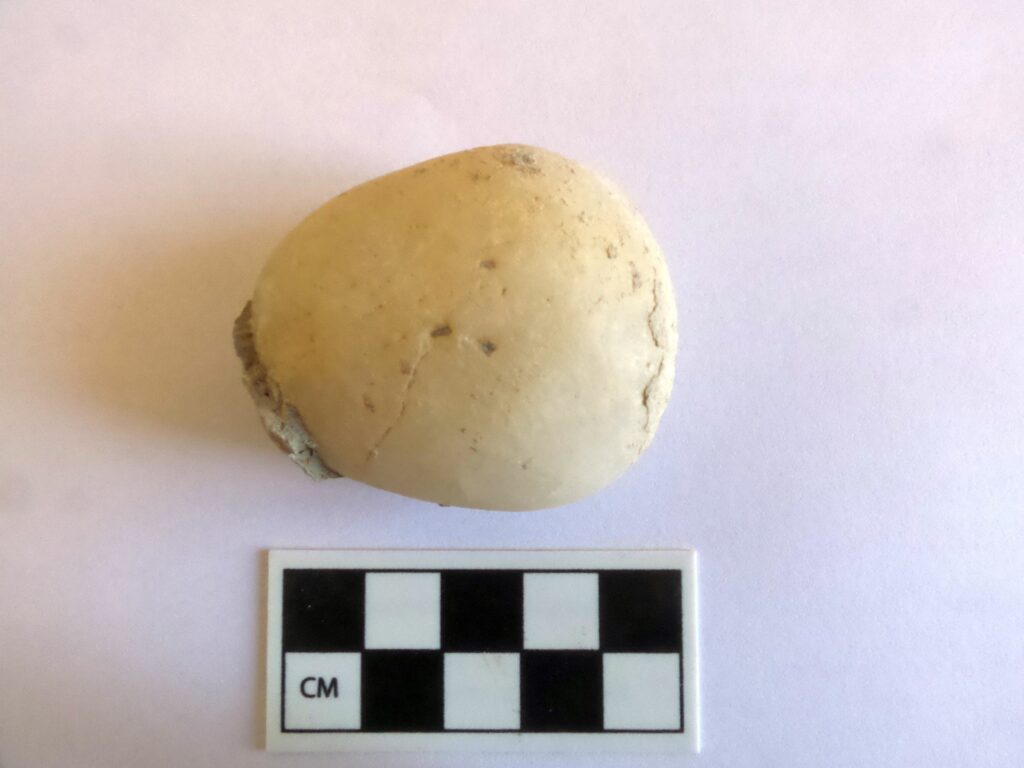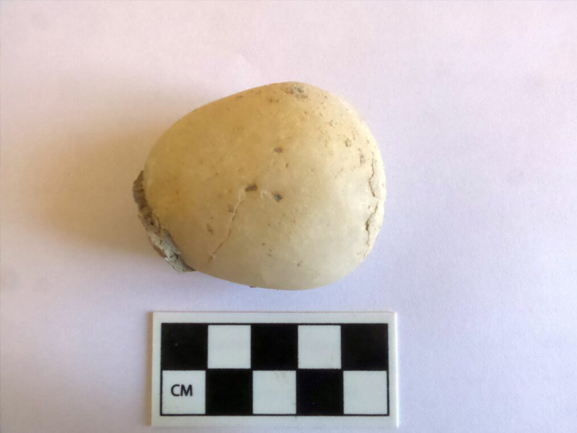A diamond in the rough: raw materials in 97.541
Catherine Scott
As much as archaeologists enjoy finding the kinds of beautiful things you might see in a museum—jewelry, glass jars, wall paintings, mosaics, etc.—we also get excited when we find the raw materials used to produce these fine objects. Raw materials and their contexts can tell us a lot about how people in the past lived and worked, as well as how they related to other people and groups nearby and far away.
This year in excavation area 97.541, we have been lucky to find a number of objects that might be raw materials for craft production. Most of these raw materials have been stone, as stone is difficult to reuse and preserves well. These include soft, colored stones that might have been used in pigment production, as well as translucent stones that could have been used to make jewelry or other decorative objects. These materials are also found alongside tools used in other kinds of production, such as needles and spindle whorls for making textiles, and stones used for polishing.

A small piece of translucent yellow stone. 
A smoothed piece of quartz. Perhaps it broke off of a larger object? 
Soft, blue stone that may have been used for producing pigments. 
A polishing stone.
The location of these raw materials relative to architecture can tell us a lot about how space was used, and how production was organized. Are they found inside buildings, or outside in open courtyards? Are they associated with houses or with workshops? If certain materials are found only in some parts of the site, access to those materials may have been restricted based on social status or the specialized function of parts of the site.

A variety of scientific analyses can be used to find the origin of these raw materials, which can tell us if they were gathered locally or imported from far away. By looking at the distribution of raw materials and finished objects across a landscape or a region, we can learn how trade routes developed and changed over time. A good example of this is the famous Uluburun shipwreck found off the southwestern coast of Turkey and dating to the Late Bronze Age; this ship contained both raw materials from around the Mediterranean (such as glass ingots) and finished products (such as gold jewelry).
We are a long way from being able to make these sorts of interpretations about the objects that have been recently found in area 97.541. However, we will continue to study them and look forward to learning more about this aspect of ancient Kaymakçı.
Look forward to more posts from Gygaia Projects over the course of the year!

